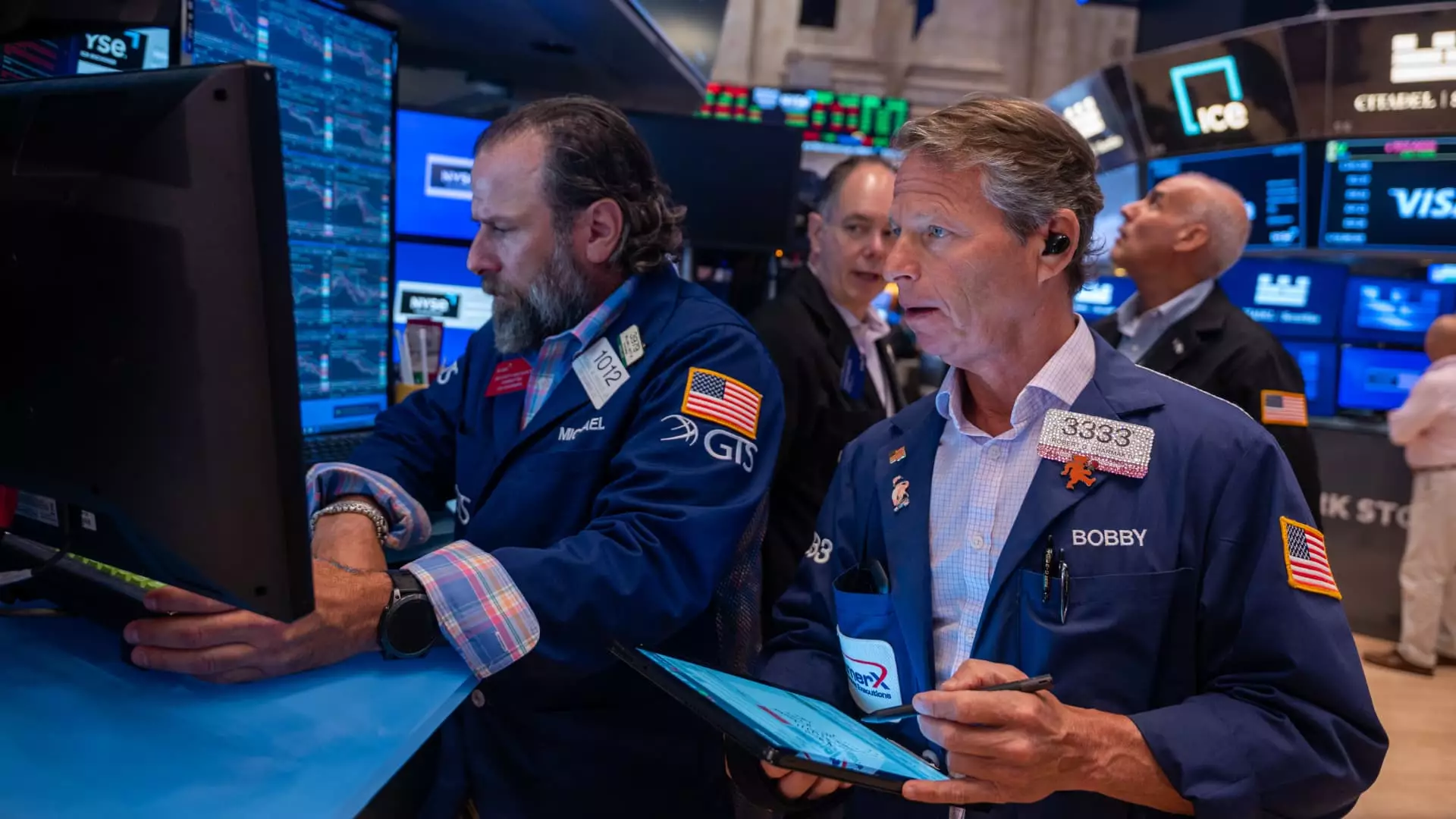Recent market actions underscore an unsettling truth: the U.S. economy is teetering on the edge of significant slowdown. Stock indices plunged in early August, reflecting deep investor concerns about a brewing downturn. The Dow’s decline of 430 points, alongside the 1.6% drop in the S&P 500 and a steep 2.1% slide in the Nasdaq, is not just a blip but a warning sign of underlying vulnerabilities. These losses weren’t random—they stem from troubling economic data, notably the jobs report that revealed growth significantly below expectations. With July adding only 73,000 jobs, far short of the anticipated 100,000, and revisions showing prior months’ gains were hugely overstated, the picture is clear: the labor market’s health is waning.
This weakening signals a deceleration that contradicts the narrative many had embraced just months ago—that the economy was resilient enough to withstand tariffs and global uncertainties. Instead, these figures suggest a drag, possibly even the early signs of recession. When the June job figures plummeted from 147,000 to a mere 14,000, and May’s numbers were cut from 125,000 to 19,000, it became painfully obvious that the labor market was not only stagnant but deteriorating rapidly. These are not just statistical blips; they indicate a fundamental shift in economic momentum that policymakers cannot afford to ignore.
Financial Markets Reflect Growing Unease
The recent market drop was compounded by ripple effects across sectors, especially in banking. Major financial institutions like JPMorgan Chase, Bank of America, and Wells Fargo saw their stock prices tumble by more than 3-4%, a clear reflection of fears about a slowing economy sapping lending activity. Industrial giants such as GE Aerospace and Caterpillar weren’t spared either, each falling by around 3%, further emphasizing concerns about production and capital expenditure.
Equally troubling was the market’s reaction to the Federal Reserve’s imminent policy decisions. Some strategists argue that the weak employment figures give the Fed all the justification it needs to cut interest rates in September. Such a move is typically seen as an effort to stimulate growth; however, the timing raises questions. Is it too little, too late? Or is this just a band-aid on an already bleeding wound? The fact that traders now assign a 66% probability to a rate cut next month suggests that markets are betting on some form of intervention—yet, it’s a gamble that might not address the root causes of slowdown.
Adding to the sense of chaos, President Trump’s rapid escalation of tariffs, with new duties ranging up to 41%, has amplified market fears. The threat of additional levies on transshipped goods and Canadian imports indicates a worsening trade environment, one that could further choke economic growth. Markets tend to dislike policy uncertainty, and with tariffs seeming to complicate international trade rather than ease tensions, the prospects for a stable recovery dim.
Tech Sector’s Mixed Signals and the Future Outlook
Technology stocks, often viewed as market leaders, exhibited volatility in this turbulent phase. Amazon, a bellwether for consumer infrastructure, saw its shares tumble by over 7% amid disappointing outlooks that cast doubts on its near-term profitability. This decline underscores how even the most robust sectors can falter amid broader economic uncertainty. On the flip side, Apple demonstrated resilience, climbing 2% after beating earnings and revenue estimates—yet one wonders if this strength is sustainable or just a brief respite before more turbulence.
The broader market’s previous attempts at recovery earlier in the day proved fleeting. Microsoft and Meta delivered solid earnings, but their gains failed to lift the entire index, highlighting the fragility of this rally. The recent streak of declines—after a string of lackluster sessions—reinforces how volatile and unpredictable the current financial climate is. It is a stark reminder that gains in stock markets often mask underlying vulnerabilities, not the other way around.
Is a Recession Inevitable? A Center-Left Perspective
From a center-wing liberal stance, the unfolding turmoil is a call for cautious policy adjustments and thoughtful economic stewardship. The signs point to an economy that has been overextended, its resilience overstated, and its vulnerabilities exposed by external shocks like tariffs and internal weaknesses such as sluggish job growth. There’s a growing consensus that aggressive monetary easing, while helpful in the short term, cannot substitute for comprehensive strategies that address structural vulnerabilities—such as income inequality, job displacement, and the need for sustainable growth models.
The economic data suggests that policymakers must prioritize long-term stability over knee-jerk reactions. While rates cuts may provide temporary relief, they risk fueling asset bubbles and encouraging reckless borrowing. Instead, a balanced approach that fosters innovation, invests in workforce development, and maintains fair trade policies is essential for navigating future uncertainties. Without such measures, the risk of a deeper recession only grows, threatening millions of Americans who are already feeling the strain.
In essence, this turbulent period exposes fundamental flaws in how economic resilience is perceived. The markets are not invincible, and hope alone cannot shield us from the consequences of policy missteps or external shocks. Responsible leadership demands a vigilant, balanced approach—one that recognizes warning signs today to safeguard the economy tomorrow.


Leave a Reply